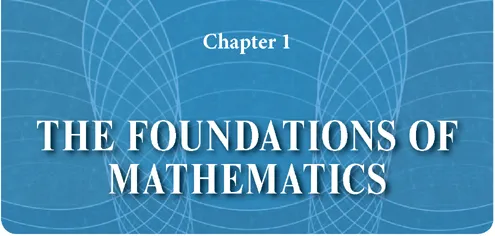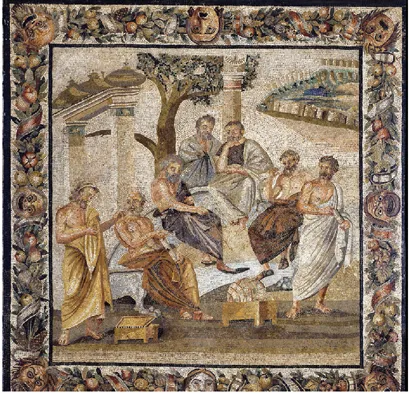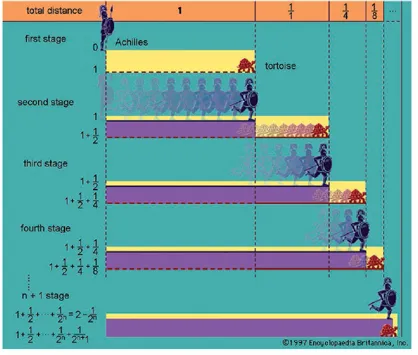
eBook - ePub
The History of Mathematics
Britannica Educational Publishing, Nicholas Faulkner
This is a test
Compartir libro
- English
- ePUB (apto para móviles)
- Disponible en iOS y Android
eBook - ePub
The History of Mathematics
Britannica Educational Publishing, Nicholas Faulkner
Detalles del libro
Vista previa del libro
Índice
Citas
Información del libro
This intriguing volume introduces readers to the origins of the mathematical principles they study every day. It covers a wide range of disciplines outlined in curriculum standards and serves as an illuminating companion to their current studies. Readers will learn about the brilliant minds behind some of the breakthroughs in mathematics. They will also enjoy the origin stories of the different disciplines in the field we're so familiar with today. The study of math should go beyond numbers, and this book certainly accomplishes that by giving readers insight into how mathematics came to be.
Preguntas frecuentes
¿Cómo cancelo mi suscripción?
¿Cómo descargo los libros?
Por el momento, todos nuestros libros ePub adaptables a dispositivos móviles se pueden descargar a través de la aplicación. La mayor parte de nuestros PDF también se puede descargar y ya estamos trabajando para que el resto también sea descargable. Obtén más información aquí.
¿En qué se diferencian los planes de precios?
Ambos planes te permiten acceder por completo a la biblioteca y a todas las funciones de Perlego. Las únicas diferencias son el precio y el período de suscripción: con el plan anual ahorrarás en torno a un 30 % en comparación con 12 meses de un plan mensual.
¿Qué es Perlego?
Somos un servicio de suscripción de libros de texto en línea que te permite acceder a toda una biblioteca en línea por menos de lo que cuesta un libro al mes. Con más de un millón de libros sobre más de 1000 categorías, ¡tenemos todo lo que necesitas! Obtén más información aquí.
¿Perlego ofrece la función de texto a voz?
Busca el símbolo de lectura en voz alta en tu próximo libro para ver si puedes escucharlo. La herramienta de lectura en voz alta lee el texto en voz alta por ti, resaltando el texto a medida que se lee. Puedes pausarla, acelerarla y ralentizarla. Obtén más información aquí.
¿Es The History of Mathematics un PDF/ePUB en línea?
Sí, puedes acceder a The History of Mathematics de Britannica Educational Publishing, Nicholas Faulkner en formato PDF o ePUB. Tenemos más de un millón de libros disponibles en nuestro catálogo para que explores.
Información
Editorial
Britannica Educational PublishingAño
2017ISBN
9781538300411

Mathematicians have long studied the logical and philosophical basis of mathematics, including whether the axioms of a given system ensure its completeness and its consistency. Because mathematics has served as a model for rational inquiry in the West and is used extensively in the sciences, foundational studies have far-reaching consequences for the reliability and extensibility of rational thought itself.
A remarkable amount of practical mathematics, some of it even fairly sophisticated, was already developed as early as 2000 BCE by the agricultural civilizations of Egypt and Mesopotamia and perhaps even farther east. However, the first to exhibit an interest in the foundations of mathematics were the ancient Greeks.
Arithmetic or Geometry
Early Greek philosophy was dominated by a dispute as to which is more basic, arithmetic or geometry, and thus whether mathematics should be concerned primarily with the (positive) integers or the (positive) reals, the latter then being conceived as ratios of geometric quantities. (The Greeks confined themselves to positive numbers, as negative numbers were introduced only much later in India by Brahmagupta.) Underlying this dispute was a perceived basic dichotomy, not confined to mathematics but pervading all nature: is the universe made up of discrete atoms (as the philosopher Democritus believed) which hence can be counted, or does it consist of one or more continuous substances (as Thales of Miletus is reputed to have believed) and thus can only be measured? This dichotomy was presumably inspired by a linguistic distinction, analogous to that between English count nouns, such as “apple,” and mass nouns, such as “water.” As Aristotle later pointed out, in an effort to mediate between these divergent positions, water can be measured by counting cups.
The Pythagorean school of mathematics, founded on the doctrines of the Greek philosopher Pythagoras, originally insisted that only natural and rational numbers exist. Its members only reluctantly accepted the discovery that √2, the ratio of the diagonal of a square to its side, could not be expressed as the ratio of whole numbers. The remarkable proof of this fact has been preserved by Aristotle.
The contradiction between rationals and reals was finally resolved by Eudoxus of Cnidus, a disciple of Plato, who pointed out that two ratios of geometric quantities are equal if and only if they partition the set of (positive) rationals in the same way, thus anticipating the German mathematician Richard Dedekind (1831–1916), who defined real numbers as such partitions.

Mosaic floor depicting Plato (sitting, middle) teaching a group of disciples of the Academy of Athens
Being Versus Becoming
Another dispute among pre-Socratic philosophers was more concerned with the physical world. Parmenides claimed that in the real world there is no such thing as change and that the flow of time is an illusion, a view with parallels in the Einstein-Minkowski four-dimensional space-time model of the universe. Heracleitus, on the other hand, asserted that change is all-pervasive and is reputed to have said that one cannot step into the same river twice.
Zeno of Elea, a follower of Parmenides, claimed that change is actually impossible and produced four paradoxes to show this. The most famous of these describes a race between Achilles and a tortoise. Since Achilles can run much faster than the tortoise, let us say twice as fast, the latter is allowed a head start of one mile. When Achilles has run one mile, the tortoise will have run half as far again—that is, half a mile. When Achilles has covered that additional half-mile, the tortoise will have run a further quarter-mile. After n + 1 stages, Achilles has run

miles and the tortoise has run

miles, being still 1/2n + 1 miles ahead. So how can Achilles ever catch up with the tortoise?
Zeno’s paradoxes may also be interpreted as showing that space and time are not made up of discrete atoms but are substances which are infinitely divisible. Mathematically speaking, his argument involves the sum of the infinite geometric progression

no finite partial sum of which adds up to 2. As Aristotle would later say, this progression is only potentially infinite. It is now understood that Zeno was trying to come to grips with the notion of limit, which was not formally explained until the 19th century, although a start in that direction had been made by the French encyclopaedist Jean Le Rond d’Alembert (1717–83).

Zeno's paradox, illustrated by Achilles racing a tortoise
Universals
The Athenian philosopher Plato believed that mathematical entities are not just human inventions but have a real existence. For instance, according to Plato, the number 2 is an ideal object. This is sometimes called an “idea,” from the Greek eide, or “universal,” from the Latin universalis, meaning “that which pertains to all.” But Plato did not have in mind a “mental image,” as “idea” is usually used. The number 2 is to be distinguished from a collection of two stones or two apples or, for that matter, two platinum balls in Paris.
What, then, are these Platonic ideas? Already in ancient Alexandria some people speculated that they are words. This is why the Greek word logos, originally meaning “word,” later acquired a theological meaning as denoting the ultimate reality behind the “thing.” An intense debate occurred in the Middle Ages over the ontological status of universals. Three dominant views prevailed: realism, from the Latin res (“thing”), which asserts that universals have an extra-mental reality—that is, they exist independently of perception; conceptualism, which asserts that universals exist as entities within the mind but have no extra-mental existence; and nominalism, from the Latin nomen (“name”), which asserts that universals exist neither in the mind nor in the extra-mental realm but are merely names that refer to collections of individual objects.
It would seem that Plato believed in a notion of truth independent of the human mind. In the Meno Plato’s teacher Socrates asserts that it is possible to come to know this truth by a process akin to memory retrieval. Thus, by clever questioning, Socrates managed to bring an uneducated person to “remember,” or rather to reconstruct, the proof of a mathematical theorem.
The Axiomatic Method
Perhaps the most important contribution to the foundations of mathematics made by the ancient Greeks was the axiomatic method and the notion of proof. This was insisted upon in Plato’s Academy and reached its high point in Alexandria about 300 BCE with Euclid’s Elements. This notion survives today, except for some cosmetic changes.
The idea is this: there are a number of basic mathematical truths, called axioms or postulates, from which other true statements may be derived in a finite number of steps. It may take considerable ingenuity to discover a proof; but it is now held that it must be possible to check mechanically, step by step, whether a purported proof is indeed correct, and nowadays a computer should be able to do this. The mathematical statements that can be proved are called theorems, and it follows that, in principle, a mechanical device, such as a modern computer, can generate all theorems.
Two questions about the axiomatic method were left unanswered by the ancients: are all mathematical truths axioms or theorems (this is referred to as completeness), and can it be determined mechanically whether a given statement is a theorem (this is called decidability)? These questions were raised implicitly by David Hilbert (1862–1943) about 1900 and were resolved later in the negative, completeness by the Austrian-American logician Kurt Gödel (1906–78) and decidability by the American logician Alonzo Church (1903–95).
Euclid’s work dealt with number theory and geometry, essentially all the mathematics then known. Since the middle of the 20th century a gradually changing group of mostly French mathematicians under the pseudonym Nicolas Bourbaki tried to emulate Euclid in writing a new Elements of Mathematics based on their theory of structures. Unfortunately, they just missed out on the new ideas from category theory.
Number Systems
While the ancient Greeks were familiar with the positive integers, rationals, and reals, zero (used as an actual number instead of denoting a missing number) and the negative numbers were first used in India, as far as is kn...